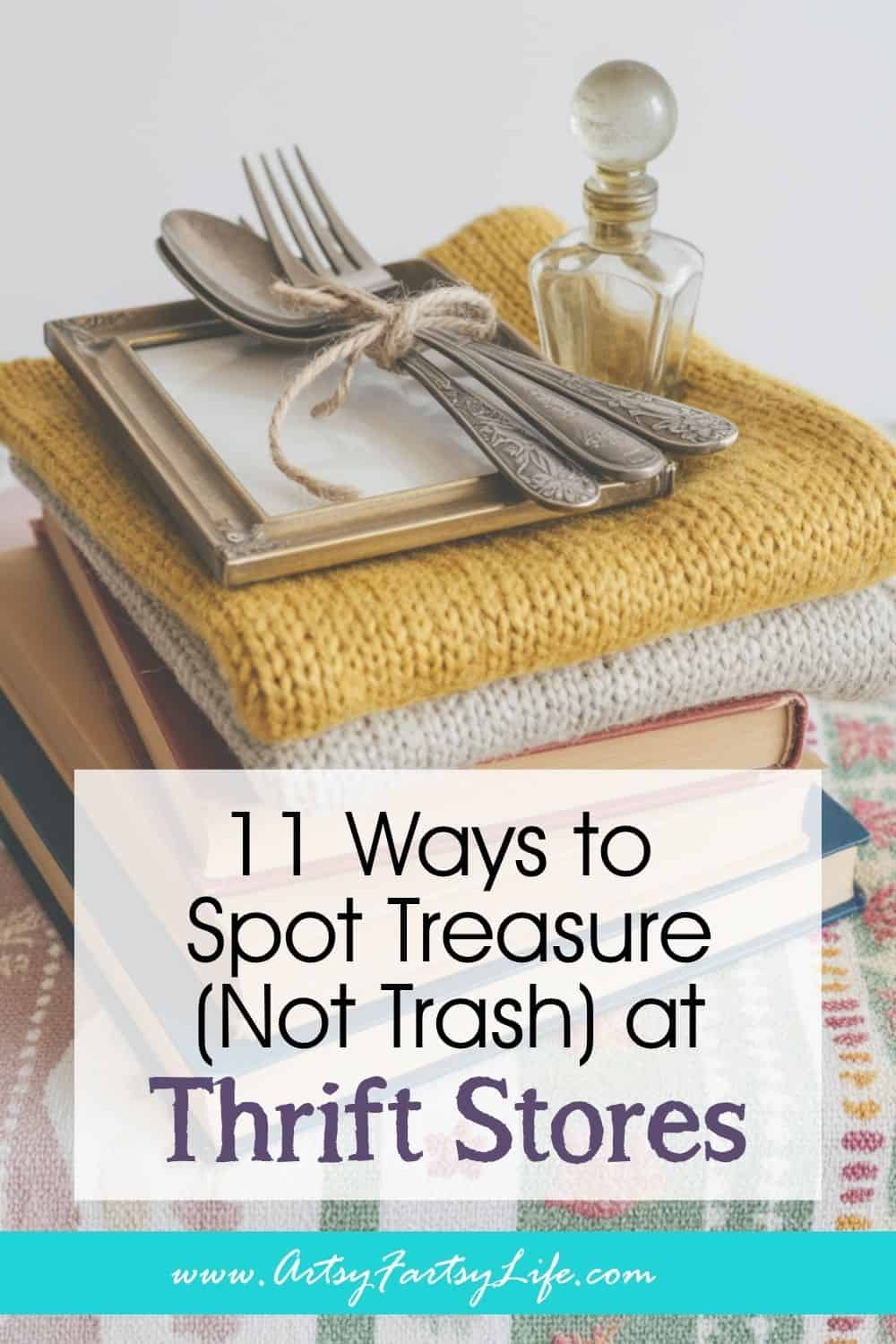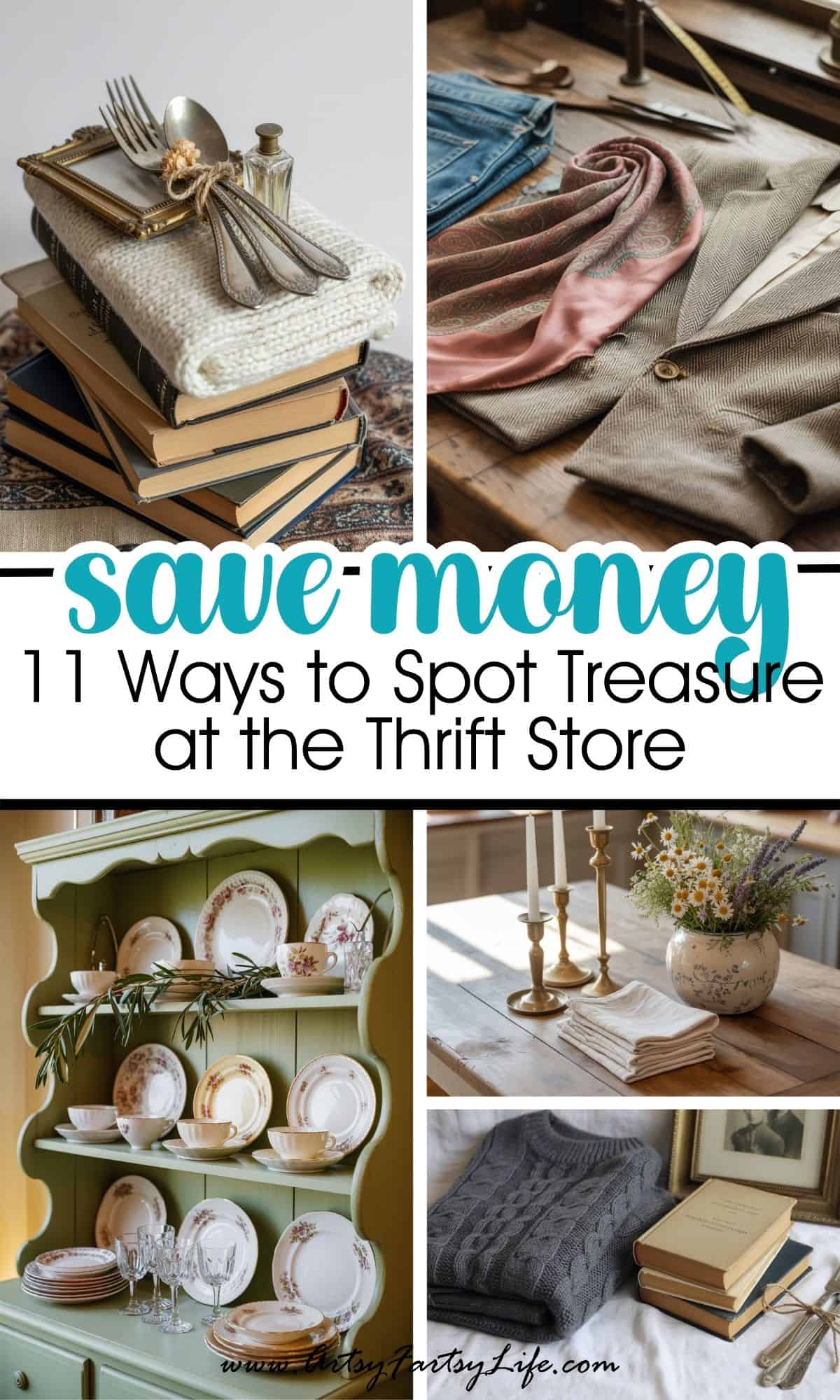Thrifting isn’t just shopping - it’s part detective work, part treasure hunt, and part sheer luck. The difference between walking out empty-handed or with a bag full of magic? Knowing how to read the clues that scream “quality” while avoiding the impulse buys that turn into clutter.

Whether you’re hunting for vintage fashion, charming home décor, or collectibles with a story, these 11 tips will help you spot the real gems.
1. Trust the Tag: USA-Made & Union Labels
Before fast fashion took over, much of the clothing sold in the U.S. was actually made here - and built to last. Older US-made garments often feature better stitching, reinforced seams, and fabrics that hold their shape for decades.
One giveaway is the union label, used by groups like the ILGWU (International Ladies’ Garment Workers’ Union) until the 1990s. They’re usually small squares tucked in with the size tag. Fonts, colors, and logos can even help date the garment to a specific decade.
Pro tip: Union labels with a blue border and a stylized needle-and-thread often mean 1960s–70s. A quick image search for “union label dating guide” can help you compare.
2. Fabric First
Your fingertips are your first filter. A polyester blouse might look fine on the hanger but feel thin and scratchy. Higher-end garments - especially vintage - will have more substantial, natural fabrics:
- Wool for warmth and structure (check for the Woolmark symbol)
- Silk for drape and sheen
- Linen for breathability and texture
- Cotton twill or poplin for durability
If it feels luxurious and sturdy in your hand, that’s a good sign. If it’s slippery, flimsy, or already pilling, put it back.
3. Become a Denim Detective
Not all jeans are created equal - and vintage Levi’s are the holy grail. The details can reveal a lot:
- Big E red tab (“LEVI’S” in all caps) means pre-1971 and can be worth hundreds, even thousands
- Orange tab = late 1960s to early ’80s casualwear, now collectible for its retro vibe
- Single-stitched inseams = before mid-1980s
- Care label missing? Likely pre-1972
Even within the same brand, some models and washes are far more valuable than others. If you want a quick study guide, this Levi’s vintage guide breaks down tabs, rivets, and stitching in detail.
4. Look for Lot Numbers & Missing Care Labels
Lot numbers - often printed on small white paper or fabric tags can be a time machine. Pre-1980s Levi’s, Wrangler, and Lee often have them. Missing care labels on any garment is a strong hint you’re holding something older than 1972 (when care labeling laws came into effect).
Pro tip: Missing care tags doesn’t always mean vintage - sometimes they’ve been cut out, but when combined with other clues (fabric type, union labels, old typography), it’s a good sign.
5. Feel the Weight
When it comes to home décor, heavier usually means better. Pick up that ceramic vase, does it feel solid and balanced in your hand? Compare it to a newer, mass-produced version, which might feel hollow or oddly light.
Weight is especially important with:
- Brass candlesticks (solid brass is heavy; plated is not)
- Pottery (thicker walls = older craftsmanship)
- Flatware (vintage stainless or silver feels denser than newer pieces)
6. Check the Country of Origin
“Made in India” or “Made in Taiwan” on older home goods can indicate mid-century imports - often handcrafted with unique patterns or finishes. Think embroidered linens from India or hand-painted ceramics from Taiwan.
Pro tip: Country labels like “West Germany” (on mugs, figurines, or Christmas ornaments) can date an item to before 1990.
7. Beware Fast-Decor Brands
Pier One, Target, Kirklands - these brands have their place, but their products are usually mass-produced, often overseas, and not intended to last decades. While some discontinued lines can be collectible, most are “lookalike” designs without lasting value.
If you’re buying for resale, skip these unless it’s an exceptional or quirky piece!
8. Hunt for Maker’s Marks
Flip it over! The underside of a dish, the bottom of a figurine, or the back of a picture frame often hides a stamp or signature:
- Pottery & Ceramics: Studio name, artist initials, or country of origin.
- Glassware: Etched brand names (Fostoria, Waterford, Anchor Hocking)
- Silverware: Sterling or silver-plated marks.
Maker’s marks help you verify authenticity and age - and in some cases, a signature alone can add serious value!
9. Use a Black Light
It sounds a little CSI, but a black light can be a thrifter’s secret weapon. Under UV light:
- Modern repairs in pottery and porcelain will fluoresce differently
- Uranium glass will glow neon green (and yes, it’s safe to display)
- Certain fake gemstones show tell-tale coloring
A pocket-sized black light keychain can live in your thrift bag without taking up space.
10. Spot Jewelry’s Secret Codes
Tiny stamps can make a huge difference in value:
- 14K, 18K, 10K = gold content.
- .925 = sterling silver.
- Designer names like Trifari, Monet, Coro, Napier = collectible costume jewelry. Fun article about finding jewelry treasures!
Run your finger over the clasp - quality pieces feel sturdier, with secure closures and smoother finishes.
11. Trust Your Stylist’s Sixth Sense
Sometimes the best finds don’t “check all the boxes” but still feel special. Maybe it’s a silk scarf in the perfect shade of red, or a ceramic vase with just the right curve. If it makes you smile and feels well-made, trust that instinct - your eye is part of the treasure-hunting toolkit!
Final Treasure Tip
Keep your phone handy. A quick search of maker’s marks, labels, or sold eBay listings can help confirm whether you’ve found something truly special - and prevent you from overpaying for something common.
The more you thrift, the sharper your instincts become. Before you know it, you’ll be able to walk into a store and spot the gems from the doorway.
Here are some more great articles you might love:
- 11 Capsule Wardrobe Pieces You Can Totally Thrift
- 10 Thrift Store Wedding Decor Finds That Are Cheap, Chic, and Charming
- 7 Ways To Thrift Your Way To A Romantic Cottagecore Wedding



